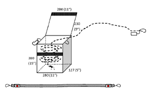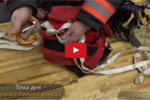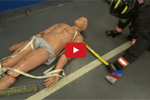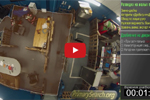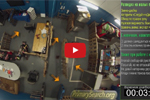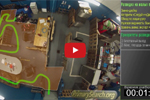
- Details
- Category: Culture
Remember we had a training video and an article in which I was explaining how a good search rope bag should be organized? Well, quite a lot of people were interested in making similar bags themselves, so I was asked a number of times about dimensions and construction of such bag.
While I am using a commercially available bag (and I am not advertising any particular brand), nothing should stop you from making your bag yourself, and this is why I decided to make a little printable flyer that has both dimensions and construction of the bag.
- Details
- Category: Culture
Regardless of the type of primary search you conduct, even if it is a small area standard search, you always need to deploy the search rope. This is needed because disorientation and subsequent LODDs happen even in standard size apartments. We will talk about how to best deploy the search rope in small area search scenario in a separate video, but today we I will show you how your search bag should be set up so that it works inside without problems.
- Details
- Category: Culture
From the early days of our careers we are trained in the fire academies to use a tool while searching. We are usually told that this extends our reach and coverage. But let’s take another look at this approach. Does it really work as advertised? Are there alternatives?
- Details
- Category: Small area standard search
Previously in Part 1 and Part 2 of this series we have learned about the simplest and most reliable navigation algorithm for small area primary search – "Door" + "Follow". Among other things we have learned that this algorithm does not guarantee complete area coverage if there are loops in the layout. In Part 3 video we will study a more advanced navigation algorithm that addresses this problem. It is called "Door" + "Split" and it allows a team of two to safely visit more area while searching in unknown layout and zero visibility.
- Details
- Category: Small area standard search
In the Part 1 of this series we have learned how to use the simplest and most reliable navigation algorithm for searching an unknown small area layout in zero visibility with a team of two firefighters – "Door" + "Follow" . In this second part of the series we will take a second look at the same algorithm, but this time as applied to the team in which one of the members has limited interior experience. We will learn what measures the team leader should take to keep the search safe.
- Details
- Category: Small area standard search
This will be a series of videos that will describe in full detail the best ways to navigate inside any layout in zero visibility while conducting a small area primary search. In part 1 we will start with the simplest and most reliable navigation algorithm and in the following parts we will progress to more advanced topics.





